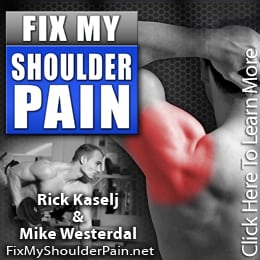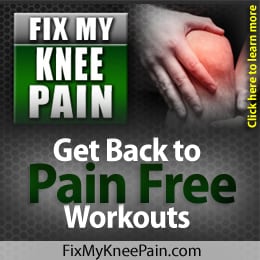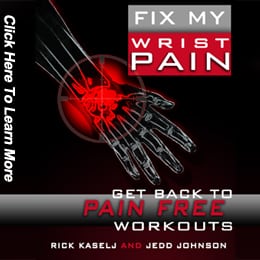Shoulder Pain Interview with Kate Vidulich
I hope you enjoyed part 1 of this interview.
Let’s continue with the interview that I did with Kate Vidulich from Outback Fitness on the importance of scapular exercise for a shoulder injury.
Kate Vidulich: Yeah, everyone goes to sleep there, right.
There’s also a point where one of these kinds of shoulder or neck injuries really become a chronic problem.
Now when it comes to exercise, people sometimes spare movement because any kind of movement increases their pain.
When you’re exercising, Rick, when do think is a good time to rest and when do you think is the good time to just continue the workout as far as having pain?
Rick Kaselj: I’m not a fan of absolutely zero rest, like lying down in bed and doing absolutely nothing.
There are very few injuries that I would end up recommending that. Even if it is recommended, it’s only for a few days. I would recommend people keep moving and doing something.
Even if you have an injury you can always work around that injury or focus on something else.
Let’s say it is the shoulder that you’ve injured or irritated. There’s still lots of abdominal work, back work, legs or foot work that you can do and focus in on while still recovering from the shoulder injury.
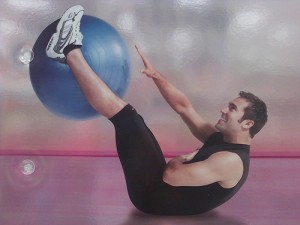
If you look at the sports performance side of things, the word they end up using is “how can I maintain the training effect” while still injured because every professional athlete is injured at some level – even though they are still playing on a day to day basis or performing on a day to day basis.
And we need to do the same when it comes to ourselves; we can shift our focus to other areas. You can regress the exercises so they are not as challenging of an exercise or modify the exercise.
For example, if you are doing push ups and you are doing full pushups from the floor, those end up being challenging or can irritate irritating or injure your shoulders. There’s no reason why you couldn’t regress and go from the knees or regress the full push up and have elbows tight tight against your body. These modification end up being easy on the shoulder as opposed to having the elbows move at 45 degrees or 90 degrees to your side.
You can even move into standing and doing a wall push up with tubing wrapped around your hands and back so that ends up making it more challenging. I can do a one arm push up on the wall or a one arm push up with one leg on the wall so it’s less demanding or challenging on the shoulder. I am still working the shoulder and chest, but I can keep on exercising it when I move up from the floor and go to the wall. I’m challenging a lot more when it comes to the core abdominal area.
Kate Vidulich: Great, absolutely, and that’s also another key factor I think when doing any of these kinds of movements: having the core activation and the stability to be able to move freely.
Rick Kaselj: Definitely. More and more research is coming out that shows the importance of a good core when it comes to activation, endurance and strength relating to lower body injuries.
Having a good, strong core decreases your risk of ankle, knee, and hip injuries. And also it ends up decreasing your risk when it comes to upper body injuries, like shoulder and neck.
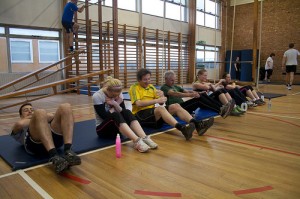
Kate Vidulich: Absolutely, so core is the way forward.
Rick Kaselj: It definitely is. I’ve been having a shift in my thinking that doing more core on a regular basis and even pretty much on an everyday basis.
But once again what I will end up doing is I’ll have maybe an intense workout Monday, Wednesday, Friday and then Tuesday, Thursday I will probably have a less intense workout that focuses a little bit more on movement: core exercises when it comes to stability, recovery exercises, for example, foam rolling for self-massage, working on some yoga movements so I’m ready for the next day’s workout.
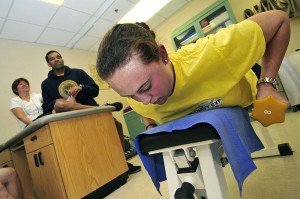 Kate Vidulich: Great. Perfect. So just a question, as a fitness professional if you have a client with shoulder pain when is the task your point of being able to help them? When should you refer them to somebody else?
Kate Vidulich: Great. Perfect. So just a question, as a fitness professional if you have a client with shoulder pain when is the task your point of being able to help them? When should you refer them to somebody else?
Rick Kaselj: My criteria is if it ends up impeding your life and it has to change what you’re doing when it comes to work, home and fun. If it forces them to change those things, like, I can’t go to work, or I’m having a difficult time doing things around the house so I’m not going to do them, or I’m not going to workout today, it’s time to go get someone to take a look at it and rule out that it is something serious.
And here in Canada what I recommend is to go to the GP or to the medical doctor, have them look at things and rule out that it is anything serious. And if it is something more serious they can fast track things to get it look at a lot faster than anyone else can.
Now that being said, after you get the clearance from the doctor saying that it’s nothing serious and it’s okay, you need to work on the rehab side of things. A fitness and personal trainer can end up helping when it comes to the rehab side of things.
Kate Vidulich: Sure, absolutely. When the client then returns and begins to workout again, I think a lot of fitness professionals imply that the client has some resistance to movement and some see that they have issues with certain movements and really should be doing this kind of movement. I was wondering if you could suggest any strategy to help overcome this kind of resistance to exercise even if you have an injury.
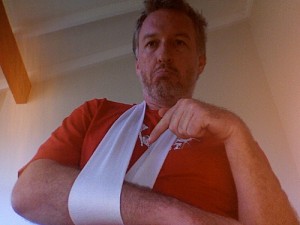
Rick Kaselj: Looking at the exercises that we traditionally get them to do, I would end up regressing them so it makes them easier by decreasing the force that ends up needing to do them.
Other things that I would end up doing is decrease or eliminate the resistance.
For example, with the push up when I’m on the floor, I’m fighting gravity to do the exercise. When I get up off the floor and go against the wall, I don’t have as much resistance from anything or gravity, and I’m still able to do the exercise.
Another concept that I look at with my clients is trying to build on better.
Meaning, I would ask them how was that exercise? Does it make things better, worse, or the same when it comes to your injury or pain? Now if it makes it worse, I’m going to check and see if they are doing the exercise correctly. If it doesn’t make it better or if there’s no change , like when they do some stretch and if they really don’t feel the stretch, you need to correct them and make sure that they are doing the stretch right. But if it feels better, then I want to build on better.
So there’s lots of it that the fitness professional can do. And how I would end up looking at it is safe contractions that you can end up doing. If you look at the contractions of the muscle there’s an isometric contraction, concentric contraction, eccentric contraction and how things go through safe to more challenging. Isometric contraction is safe. Next is concentric and then after that is eccentric.
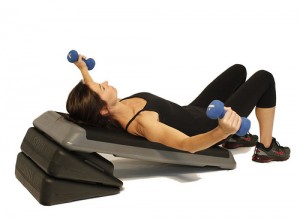
A lot of isometric work you can do and it ends up being safe on that injured area. If you look at core training, a lot of the exercises that we get people to do for core training are isometric contractions. They are holding their bodies in neutral and they are contracting their muscles to prevent any movement happening and that ends up being a nice and safe contraction to do. That would end up applying when it comes to the hip. It would also apply when it comes to the neck and the shoulder.
Kate Vidulich: Fantastic. This is really great! It makes perfect sense to hold isometric contractions so they are not moving through any range which could either go wrong if they don’t feel that they are strong or stable enough but also work the muscles in order to still get the benefit from working out.
Rick Kaselj: Definitely.
Kate Vidulich: Wonderful. Well, Rick that’s all that we have for our time for today. Thank you so much for joining me on the call. Thank you for your time, it’s been fantastic.
Rick Kaselj: Thank you. And I can let people know where to get more information about me. My name is Rick Kaselj, you can head over to exercisesforinjuries.com. There’s a whole bunch of information about exercise and injuries. It’s targeted to the trainer and to the coach.
And I have a second site called ShoulderPainSolved.com, that’s where I focus on the general public when it comes to injuries and pain. People can head to one of those two places and learn more about what I do.
If they have any questions they can just leave them on the site and I will answer them.
Kate Vidulich: Wonderful, thank you Rick. This has really been fantastic and I will definitely go on and check out these sites. It’s got some great information for everybody. Alright, thank you Rick.
Thank you for reading.
Rick Kaselj, MS
.
